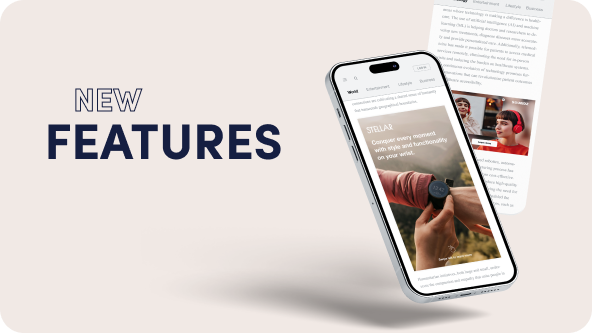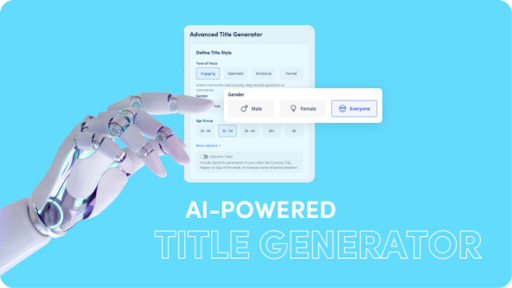What Is a CTA and Why It Matters In Marketing (Plus Cool CTA Examples)

What’s the sweetest word for every digital marketer?
Conversions.
Populating your website, online ads, and social media posts with brilliant content and disruptive images simply isn’t enough to keep your business in business. You need people to click – and then convert. That’s why you need strong CTAs (Calls to Action). They’re the secret weapon that holds the power to transform mere website visitors or passive scrollers into paying customers.
In a world bursting with shopper choices, especially online, CTAs are the subtle yet essential nudges that guide your potential customers toward a desired action. Whether you want them to make a purchase, subscribe to your newsletter, or download an ebook, CTAs play a key role in turning your online endeavors into tangible results.
That’s a big claim to make, but do we have the statistics to back it up? Yes, we sure do.
- PartnerStack upped its conversion rate by 111.55% after changing its homepage CTA to “Get Started” instead of “Book a Demo” (source: Hubspot).
- Mailmodo changed their generic “Book a demo” CTA to “Talk to a Human,” which doubled their conversions (source: Hubspot).
- Emails with a single CTA can increase clicks 371% and sales 1617%. (source: WordStream)
What is a CTA?
A Call-to-Action, or CTA, is a persuasive and strategically placed component in a digital asset that prompts the audience to take a specific action. It serves as a clear and straightforward directive, guiding users to perform desired tasks, like making a purchase, downloading a resource, or navigating to another page.
Why are CTAs Important in Conversion Marketing?
CTAs are designed to captivate attention and encourage immediate action, ultimately driving conversions and contributing to achieving business objectives. They come in a number of forms, like buttons, text links, and even images – though those are mostly on social media – and create a valuable bridge between what people see and what action they take.
CTAs have a lot of power in your marketing strategy, making them very valuable. Here’s why:
- CTAs direct user behavior
- CTAs increase online engagement
- CTAs provide a ‘barometer’ of the efficacy of an ad or campaign (ie. CTA click-through rates are an indicator of the performance)
- CTAs contribute to sales funnel progression
- CTAs help maximize your marketing ROI (return on investment)
How to Create Compelling CTAs
It may seem easy to create CTAs, especially considering how short they are. But ask any microcopy writer and they’ll tell you, shorter text is always tougher! There are a number of best practices you can apply to create compelling CTAs that really convert:
- Be clear and specific: Use concise and eye-level language that leaves no room for confusion. When readers are thinking about clicking on a CTA, they want to know where you’ll take them next. So generic CTAs like “Learn more” or “Click here” often won’t cut it.
- Create urgency: Encourage prompt action by using words like “now,” “today,” or “limited time”.
- Use active verbs: These compel the user to take action. Great examples include: Explore, start, enjoy, get, and join.
- Keep it short: It’s tempting to make CTAs long, but this defeats their purpose. Stick to 5 words max.
- Test, change, test again: Marketing is a long-term strategy that requires flexibility. Testing CTAs is a great way to learn more about your users and understand what makes them click.
Best Practices for CTA Optimization
Great content lives in context, so once you’ve got your CTAs written, use these best practices to help them get seen (and clicked):
- A/B test: A/B testing lets you split your audience into two groups, and test two CTAs simultaneously. This is a great way to compare and contrast user groups, learning what they like and where they’re most likely to click.
- Optimize for mobile: Your CTAs may look amazing on desktop, but these days, so many people are accessing content on their mobile devices. So be sure your CTA reads well on mobile and is optimized for a smaller screen. You may tell readers to “click” on desktop, but for mobile, you need to switch that to “tap” since the action they take is different.
- Personalize: The more you can tailor your CTAs to different audience segments, the better. People feel more involved and engaged when they read CTAs addressing their specific needs and intents. And those perform better too.
- Action verbs need action icons: People understand content differently, and to account for that, it’s a great idea to add icons or symbols to your CTA that support the text. Adding a shopping cart icon next to a “Buy Now” CTA for example, is a form of intuitive UX that makes CTAs more effective and encourages more conversions.
- Talk benefits, not just features: Help users understand what they’ll gain from clicking a CTA, instead of just the feature they’ll see. For example, if you were releasing a video about how your product helps people stop smoking, switch your CTA from “Watch video” to “Explore your smoke-free life”.
- Localize CTAs: Talk to people in a language they understand. Localizing is not just translating. It’s a form of engaging users in various countries using language that makes sense to them and that they relate to.
Measuring CTAs: How to Know If a CTA is Working
How do you know if your CTAs are working well? These are just a few of the measurements to make that determination:
- Click-Through Rate (CTR): This figure measures the percentage of users who clicked on your CTA, against the total number of users who saw it. It’s calculated as (Clicks / Impressions) * 100 and the higher the CTR, the better your CTA is performing.
- Cost Per Click (CPC): Your CPC is a very important metric, because it tells you how much each click costs you. When measured in conjunction with your conversion rate, it helps you understand whether your marketing efforts are meeting your business goals. CPC is calculated as (total cost of your clicks/total number of clicks); and the lower your CPC, the better!
- Conversion rate: This measures the percentage of users who have completed a certain action after they clicked on your CTA. This could be anything from making a purchase to filling out a form and is calculated as (Conversions / Clicks) * 100.
CTA Examples
Now that we’ve explored the best practices for creating and optimizing CTAs, let’s take a look at a few CTA examples that really worked:
Spotify
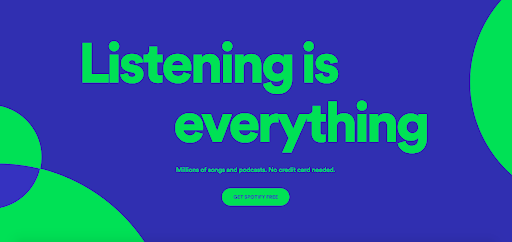
Here’s a simple yet powerful CTA: Get Spotify free. It’s action-oriented, tells users where they’ll go in the next step of their digital journey, and offers them a clear benefit – they get something free. And who doesn’t love a freebie?
CrazyEgg
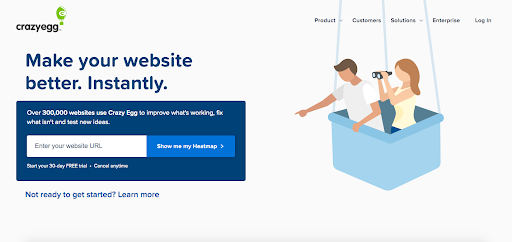
This is an interesting one, specifically because it uses a rather passive verb (“show”) instead of an active verb. It’s a great example of an effective CTA though, as it delivers the benefit to the user in just 4 words, and personalizes it for the reader with the reference to “my Heatmap”.
ClickUp
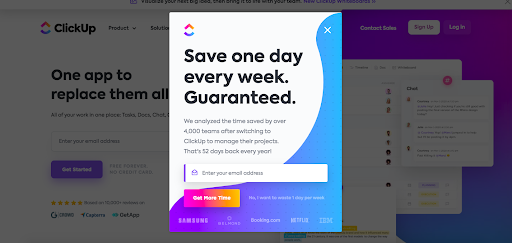
We love this one because it capitalizes on such a common pain point – time! No one ever feels they have enough, and for a brand to give us what seems to be the gift of time in a CTA, who wouldn’t want to click?
Convert Away with CTAs
CTAs, like words, really matter. They’re one of the most powerful elements you can have in any landing page, digital ad, or online asset, so ensure you capitalize on best practices to make them work for you.
FAQ
What is a Call To Action?
A CTA is a clear and compelling page component in any digital asset that encourages viewers to take action, guiding them to perform a certain task (such as clicking to navigate to another webpage, buying a product, downloading an ebook, or any other action).
Why are CTAs important for digital marketing campaigns?
CTAs are a vital component for digital ads and campaigns as they enable viewers to take the next logical step in their online journey, such as making a purchase or signing up for a newsletter. They’re very measurable and allow marketers to track conversions and learn more about their users. They are also easily tested and optimized, so marketers can improve their CTAs quickly.
Are there any tools or platforms that can help optimize CTAs?
There are numerous online tools and platforms you can use to optimize CTAs. Popular examples include Google Optimize, Unbounce, HubSpot, and Hotjar.



